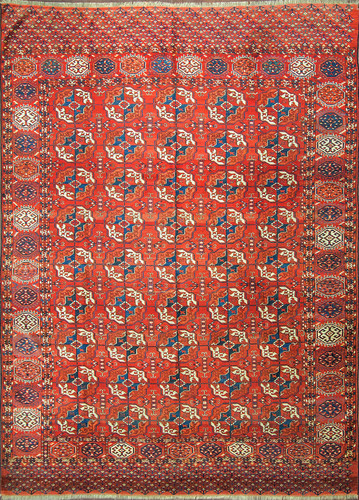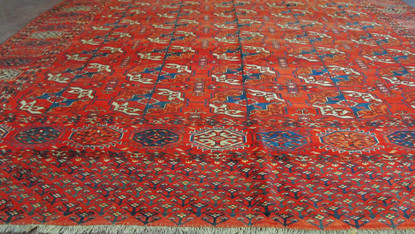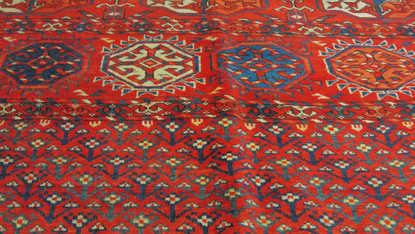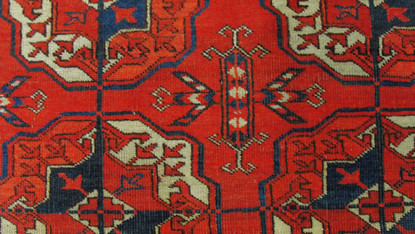A TEKKE MAIN CARPET
Click image to enlarge it
Size:
6'8" x 9'7" - 203cm x 292cm
Origin:
Period:
Late 19th century
Materials:
Wool pile, wool warp & weft
Condtion:
Very good
Price:
$8,500.
Item#:
01004
Notes:
The standard designs used by the Tekke vary according to the nature of the weaving.
Main Carpets. The Tekke gul was used almost exclusively as the major gul in the field of main carpets. Minor guls usually are either the chemche or gurbaghe (also called the kurbage) gul.
On Tekke carpets which were made up to ner the end of the 19th century, the major border is on a red ground and contains rows of octagons, usually filled either with four small eight-pointed stars (occasionally one large star) or with a kotchak-cross ornament. In their pile weavings, the Tekke used an asymmetrical knot open to the right, almost always with nondepressed warps.
The Teke were part of the Salyr (Salor) of the Oguz Turks. When the Oguz split over the issue of converting to Islam the Teke/Salyr converted to Islam and became part of the Seljuk/Oguz. The Salyr split in the face of the Mongol onslaught. What we know today as Salor are those that stayed in Turkestan and came under the sway of the Mongols. The Teke emerged again in the 16th century as part of the Sayin Khan-Salor. At this point the Salor/Salar split occurred. The Teke with the Salor stayed in Turkestan under the domination of the Uzbek Mongols. A significant part of the Salyr moved east under the protection of the Mogholistan Khans. They are now in China as the Salar.
In the late seventeenth century the Salor confederation broke up which forced the three primary tribes of the confederation, the Salyr, the Saryk, and the Teke out of the Mangyshlak Peninsula and the Balkan Mountains. The tribes moved eastward and then south. this set off a series of incidents where the Saryk usurped the Salyr and then the Tekke/Teke usurped the Saryk. The Tekke/Teke were the dominant southern Turkmen tribe when the Russians came in.







